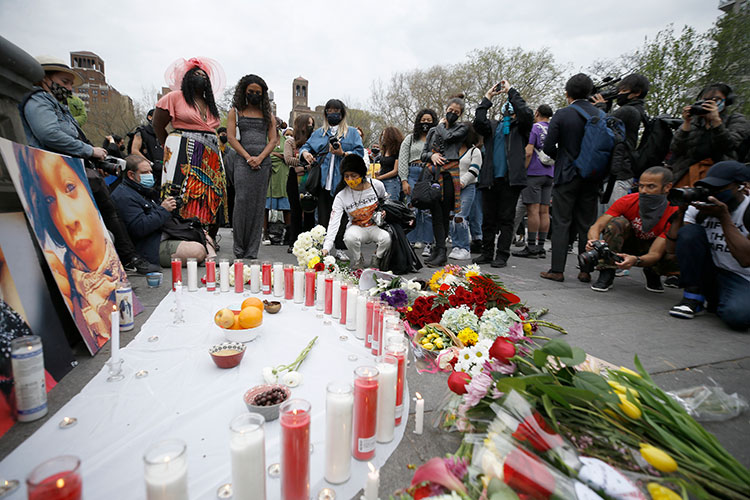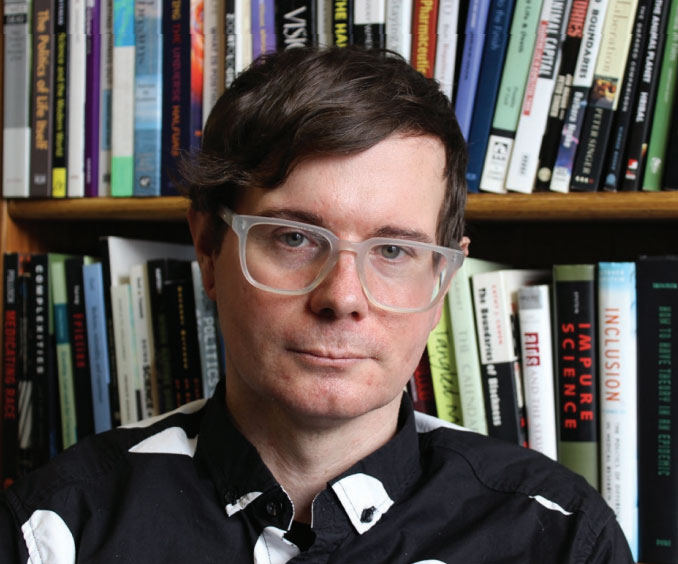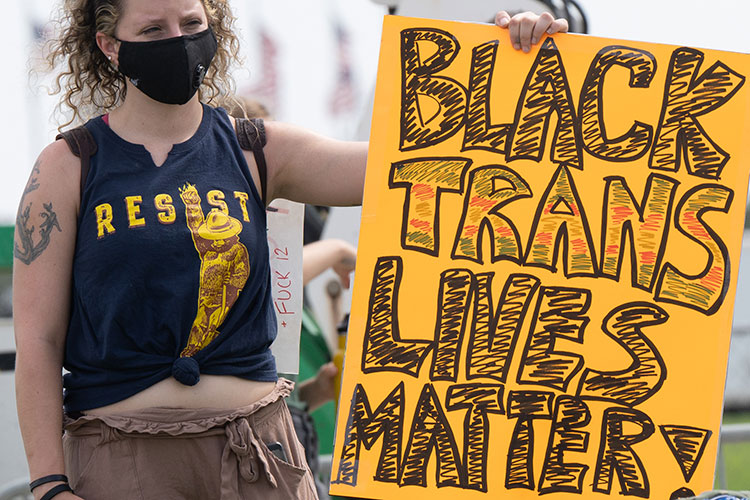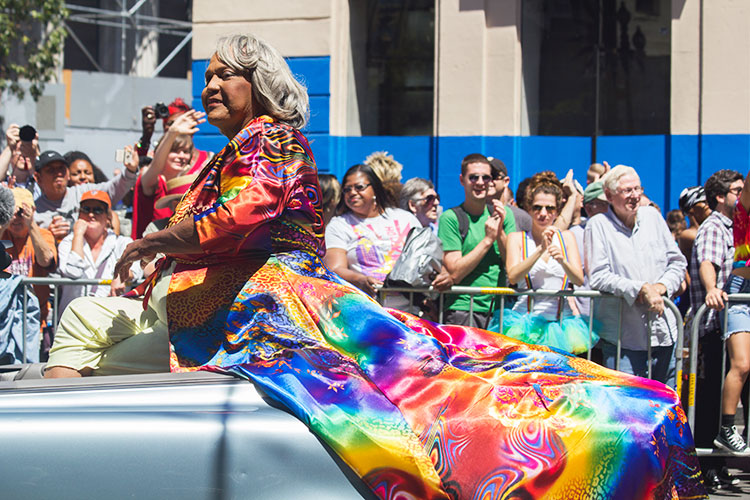Why is anti-trans violence on the rise in America?

While the American public may have a broader understanding of the experiences of people who are transgender, non-binary and gender-nonconforming, violence against these communities — in the form of killings and prejudiced American policy — has continued to rise.
This year is on track to be the deadliest on record in America, with 29 trans and gender-nonconforming people killed. At this time in 2020, which was a record-breaking year for such killings, 13 had been reported, according to the Human Rights Campaign. Though recently proposed legislation, like the LGBTQ Essential Data Act, aims to combat that violence by better tracking those deaths, more than 100 anti-trans bills have meanwhile been proposed this year — the most in U.S. history — by conservative lawmakers. Thirteen of those bills have passed.

“We don’t want more data. We want less deaths,” said Eric Stanley, an associate professor in gender and women’s studies at UC Berkeley. “Trans people are positioned in relation to a normative culture that is both fascinated and repelled by us. It’s not usually, ‘I hate you, get away.’ It’s more often, ‘I hate you. Come really close so I can terrorize you.’”
“The culture war has landed on trans communities, and that violence is specifically brutal and very corporal,” added Stanley.
An expert in queer and trans social movements, Stanley has organized and advocated for transgender rights in the Bay Area for decades. Their book, “Atmospheres of Violence” comes out this fall and delves into the contradictions and central role of racialized and gendered violence in the United States.
Stanley spoke with Berkeley News about the impact that racist and colonial institutions have had on transgender communities, and how the public can move forward with structural and transformational change.
Berkeley News: Why do you think we’re seeing a marked increase in transgender violence and killings this year?
Eric Stanley: There could be an increase in reporting, or other factors. But what we do know is that every year since they started recording murders of trans people, we’ve seen an increase.
But the way I think we should frame it is — one person murdered is one person too many.
We’re currently in this time of LGBT formal equality. The troubled language of “full citizenship” is used to make it seem like transgender communities are no longer living through contiguous harm. Yet, at this same time, along with the waves of anti-trans legislation, we still see these vicious attacks.
Paying attention to this violence forces that narrative of progress back. We are in a very different space than the one that the dominant culture wants us to believe we’re in.
We have to remember that these beautiful people were stolen from their lives much too early, and that is a loss for us all. We must also be clear that Black, brown and Indigenous trans women continue to be hyper-impacted by these and other forms of violence. But this is not to say that people remain singularly abject; these same communities are organizing to end the deadly world and create one where we might survive.
So, anti-trans violence is always racialized within the idiom of gender. And that’s important to remember.

What is the difference between violence against trans people of color versus trans people who are white?
Structuring forces like anti-Blackness and colonialism produce “trans” as an understandable form of identity, and at the same time, it remains a place of refuge. So, of course, white trans people who are otherwise well-resourced are going to experience anti-trans violence in different, and less intense, ways.
In terms of incarceration, Black trans people are hyper-incarcerated in relation to white trans people, because white people are incarcerated less than Black people. And so, those same legacies of slavery and anti-Blackness that constitute policing continue within marginalized communities.
It also seems important to note that the demands to abolish the police — sparked by the concentrated police killings of Black people — that built momentum in the streets last summer have seemingly been flipped upside down. We are now living in the nightmare world where, once again, increased policing is being sold as a racial justice project. And we’re seeing the same thing with gender and sexuality as people argue for more police to protect trans people.
But we know that’s antithetical and would disproportionately harm Black and/or trans communities.
The way law enforcement records the violence against trans people is very inconsistent: Certain cities do not consider a victim’s sexual orientation or gender identity. Would it be helpful to do that across the entire country?
We don’t want more data. We want less deaths.
Sometimes data can be useful, so I’m not suggesting otherwise. But I think it’s fetishized in a way where people believe “the truth lies in the data,” when the truth actually lies in people’s lived realities.
“Lawmakers will create the architecture to house data, but not the housing for low-income trans people.”
I would caution against this singular approach. For example, people demand the end of policing, but then are only offered the promise of more data.
I think lawmakers will create the architecture to house data, but not the housing for low-income trans people. I say this in an attempt to restage the question of violence, to ask where it begins and ends, and to continue to ask what people need to thrive.
What we are building is a movement against the structures that push people toward harm, versus just counting them after the fact.
Is there a correlation between this uptick in murders and the increase in policy being proposed to take away the rights of trans and gender-nonconforming Americans?
It’s never just one thing. It’s always a constellation of systems that are rubbing up against each other. It’s racial capitalism. It’s the ongoing impact of settler colonialism and imperialism. It’s also the institutions of policing, imprisonment and deportation. These are all different forms of domination situated together that produce this atmosphere of violence.
So, in responding to these murders, we need to be thinking about all of those things, all the time. That is hard and doesn’t make for a very good mainstream news story: They want a single bad person, not a whole deadly system.
But most forms of anti-trans violence are specifically brutal. They’re also very corporal. Trans people are positioned in relation to a normative culture that is both fascinated and repelled by us. It’s not usually, “I hate you, get away.” It’s more often, “I hate you. Come really close so I can terrorize you.”
“Trans people are positioned in relation to a normative culture that is both fascinated and repelled by us.”
We see this in the ways trans people are produced as props in the latest culture war.
These anti-trans bills are rooted in an obsession with the idea of trans people’s bodies. The politicians authoring these bills are saying, “Let me study you, produce you as a singular object outside of yourself, so that I cannot just terrorize you, but produce your life as terror.” This is, as I explore in my book, the other side of assimilation.
But, I mean, compared to 20 years ago, people have a broader understanding and lexicon of trans, non-binary and gender-nonconforming people. So, there is that. And we are seeing more media visibility, but the violence is still increasing.
So, then, what is the relationship between visibility and violence?
Do you think more transgender visibility correlates to this increase in violence?
Some people argue that visibility can, unfortunately, create access for people to commit more harm. But that’s not exactly what I’m saying.
I would want to caution against that perspective because it can place the blame of anti-trans violence on trans people.
The point that I want to underscore about visibility is that it does not self-evidently produce material changes. The story that the dominant culture tells us is that “rights and visibility” will offer a more livable life. But it’s really much more nuanced than that.
And it’s not to say that visual and material cultures are separate. They are tightly bound. But what I’m always pushing for are structural, which is also to say epistemic, changes, including the redistribution of resources and the return of stolen lands. I think that we sometimes lose track of that.
There’s no elevator pitch to a solution for all of this. But for people who want to contribute to those structural changes you speak of, what would you tell them?
Within all this sorrow, there is also the intense creativity and shattering beauty of trans life.
Moments where people find ways to resist and strategize for living against the parameters of what was offered to them. Those things are really important to hold onto because this all can feel overwhelming.
Miss Major (Griffin-Gracey) has been active in revolutionary struggles for the last 50 years, and she continues to transform possibilities. She is a friend and a family member that I have learned a lot from. And the kind of space that she makes for so many other people is really powerful.
She’s somebody that gives me hope, or as close as I can get to it.

I think there are multiple ways to get involved. But it is important to approach the work through an understanding that the binary gender system is a product of colonialism. And that trans does not only name an identity, it is also an analytic.
If you’re interested in supporting trans liberation, then figure out who is organizing against the street sweeps of homeless people living in Berkeley and join them. That’s a trans issue. Housing, access to health care, prison abolition, defending the West Berkeley Shellmound. Those are all trans issues, not only because they impact trans people, but also because trans people are there fighting back.
Working toward another world is our only way out. Attempting to reform a system, like the prison industrial complex, will not eliminate its violent foundations. Reforms, as insurgents remind us, actually make the system bigger, make the system much deadlier, make the system more racist, more classist and ableist.
You can’t reform a system that is built on slavery, on Indigenous genocide, on transphobia, and through all forms of degradation — we have to abolish it.
So, we also can’t lose sight of the radical transformation that we want and need, our collective life depends on it.
